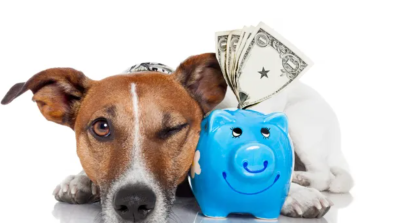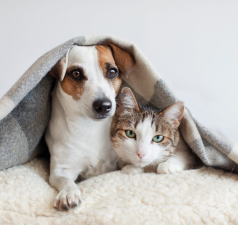As the number of pet owners increases, pet-related consumption is becoming more and more diverse. Recently, "pet insurance" has gradually become popular.
In the eyes of pet owners, the medical expenses caused by pet illness or injury are relatively high. Buying an insurance policy for pets will undoubtedly reduce the burden of long-term pet keeping.


As the number of pet owners increases, pet-related consumption is becoming more and more diverse. Recently, "pet insurance" has gradually become popular.
In the eyes of pet owners, the medical expenses caused by pet illness or injury are relatively high. Buying an insurance policy for pets will undoubtedly reduce the burden of long-term pet keeping.
The types of pet insurance are also becoming more and more abundant. The main product types in the pet insurance market have covered medical insurance, liability insurance, accident insurance, pet theft insurance, shipping insurance, etc. The coverage of insurance items is different, and the premiums range from more than ten yuan per month to several hundred yuan per month.
However, after nearly 20 years of development, domestic pet insurance still has a big gap compared with the international market. As early as 1890, Sweden had insurance for productive livestock such as cattle and horses; in 1947, the UK officially gave birth to insurance products specifically for pets rather than productive livestock...

In terms of insurance rates, Sweden, as the country with the earliest and most developed pet insurance industry, has a pet insurance rate of more than 40%; the UK's pet insurance rate is about 25%; Japan reaches 7%; although the insurance rate of pet cats and dogs in the United States is only 1%~2%, its pet insurance products and services are relatively mature.
The importance of pet insurance
In the United States, medical expenses have always been a considerable expense, especially pet medical care. The basic cost of a single veterinary clinic for dogs is about $200, and the cost for cats is about $160. In case of emergency situations such as sudden illness or accidental injury, this price may even double. In addition, as pets age, the cost of care and the possibility of illness will increase, and the treatment of some major diseases can even reach tens of thousands of dollars. In this case, it is undoubtedly a financial burden for the owner. Good pet insurance can save you from having to pay huge out-of-pocket expenses - which also means you won't have to make the heartbreaking choice of being forced to say goodbye to your pet because you can't afford it.
Pet Insurance Categories
In the United States, there are two types of items we can buy for our pets, one is Wellness Plan and the other is Pet Insurance.
Wellness Plan:
Wellness Plan is not really "pet insurance" because it applies to expected veterinary expenses and daily health care. The content usually includes exemption from outpatient fees, routine vaccinations, comprehensive pet physical examinations, preventive care, sterilization, etc., which is suitable for daily health maintenance.
Pet Insurance:
Pet Insurance is suitable for paying veterinary expenses to diagnose and treat unexpected situations, such as injuries and diseases. Each pet insurance company offers different insurance plans, but they generally include
① Chronic diseases, such as diabetes, osteoarthritis, etc.;
② Hereditary diseases;
③ Major unexpected medical expenses;
④ Partial health care. These ordinary policies do not include routine preventive examinations, routine physical examinations, and vaccine costs.
Factors that influence pet insurance prices

There are several factors that influence pet insurance prices:
- Age: Older pets are generally more expensive to insure because they are more prone to health problems.
- Gender: Male pets are generally more expensive to insure.
- Breed: Cats are generally cheaper to insure than dogs; breeds that are more prone to health problems will have higher insurance costs.
- Living location: Those who live in areas where veterinary care is more expensive will need to pay more for their pet insurance plans.
- Pet's working status: Some pet insurance companies charge more for working pets.
- Coverage selection: Plans that cover more health conditions will cost more than plans with limited protection.
- Annual maximum limit: Most pet insurance plans have an annual maximum limit that limits how much the company will pay for pet care. Choosing a higher annual maximum limit will increase premiums.
- Reimbursement ratio: Most pet insurance plans reimburse the insured for 70% to 90% of the covered treatment costs. Choosing a higher reimbursement ratio will increase premiums.
- Deductible: Choosing a lower deductible will increase the premium of pet insurance.
Small pets that are usually healthy and have regular physical examinations can give priority to buying only the Wellness Plan, which can save a lot of insurance premiums. If the pet has been injured in the past or has a long-term disease that requires regular examination and treatment, it is better to buy both plans to prevent sky-high pet medical bills. Huhu suggests that owners can choose a Wellness Plan for puppies and kittens first, and then switch to Insurance after vaccinations and sterilization surgery are completed and they grow up slowly. However, everyone should make specific choices based on the actual situation of their pets.
The coverage terms of cat insurance and dog insurance are basically the same, but relatively speaking, dog insurance will be more expensive than cat insurance because the veterinarian who treats dogs will charge a little more. In the United States, the average cost of dog insurance is about $18 per month (accident insurance only) or about $50 per month (accident insurance and disease insurance); the average cost of cat insurance is about $11 per month (accident insurance only) or about $28 per month (accident insurance and disease insurance).


